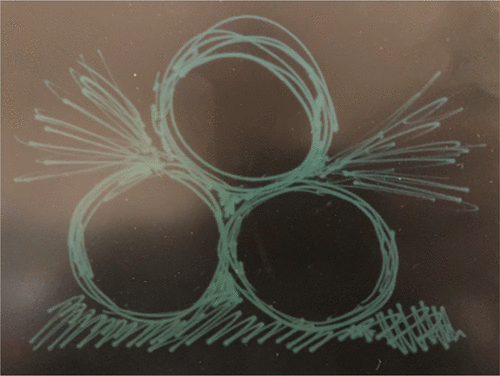当前位置:
X-MOL 学术
›
Acc. Chem. Res.
›
论文详情
Our official English website, www.x-mol.net, welcomes your feedback! (Note: you will need to create a separate account there.)
Toward Mechanistic Understanding of Mechanochemical Reactions Using Real-Time In Situ Monitoring
Accounts of Chemical Research ( IF 18.3 ) Pub Date : 2022-04-21 , DOI: 10.1021/acs.accounts.2c00062 Stipe Lukin 1 , Luzia S Germann 2 , Tomislav Friščić 2 , Ivan Halasz 1
Accounts of Chemical Research ( IF 18.3 ) Pub Date : 2022-04-21 , DOI: 10.1021/acs.accounts.2c00062 Stipe Lukin 1 , Luzia S Germann 2 , Tomislav Friščić 2 , Ivan Halasz 1
Affiliation

|
The past two decades have witnessed a rapid emergence of interest in mechanochemistry–chemical and materials reactivity achieved or sustained by the action of mechanical force–which has led to application of mechanochemistry to almost all areas of modern chemical and materials synthesis: from organic, inorganic, and organometallic chemistry to enzymatic reactions, formation of metal–organic frameworks, hybrid perovskites, and nanoparticle-based materials. The recent success of mechanochemistry by ball milling has also raised questions about the underlying mechanisms and has led to the realization that the rational development and effective harnessing of mechanochemical reactivity for cleaner and more efficient chemical manufacturing will critically depend on establishing a mechanistic understanding of these reactions. Despite their long history, the development of such a knowledge framework for mechanochemical reactions is still incomplete. This is in part due to the, until recently, unsurmountable challenge of directly observing transformations taking place in a rapidly oscillating or rotating milling vessel, with the sample being under the continuous impact of milling media. A transformative change in mechanistic studies of milling reactions was recently introduced through the first two methodologies for real-time in situ monitoring based on synchrotron powder X-ray diffraction and Raman spectroscopy. Introduced in 2013 and 2014, the two new techniques have inspired a period of tremendous method development, resulting also in new techniques for mechanistic mechanochemical studies that are based on temperature and/or pressure monitoring, extended X-ray fine structure (EXAFS), and, latest, nuclear magnetic resonance (NMR) spectroscopy. The new technologies available for real-time monitoring have now inspired the development of experimental strategies and advanced data analysis approaches for the identification and quantification of short-lived reaction intermediates, the development of new mechanistic models, as well as the emergence of more complex monitoring methodologies based on two or three simultaneous monitoring approaches. The use of these new opportunities has, in less than a decade, enabled the first real-time observations of mechanochemical reaction kinetics and the first studies of how the presence of additives, or other means of modifying the mechanochemical reaction, influence reaction rates and pathways. These studies have revealed multistep reaction mechanisms, enabled the identification of autocatalysis, as well as identified molecules and materials that have previously not been known or have even been considered not possible to synthesize through conventional approaches. Mechanistic studies through in situ powder X-ray diffraction (PXRD) and Raman spectroscopy have highlighted the formation of supramolecular complexes (for example, cocrystals) as critical intermediates in organic and metal–organic synthesis and have also been combined with isotope labeling strategies to provide a deeper insight into mechanochemical reaction mechanisms and atomic and molecular dynamics under milling conditions. This Account provides an overview of this exciting, rapidly evolving field by presenting the development and concepts behind the new methodologies for real-time in situ monitoring of mechanochemical reactions, outlining key advances in mechanistic understanding of mechanochemistry, and presenting selected studies important for pushing forward the boundaries of measurement techniques, data analysis, and mapping of reaction mechanisms.
中文翻译:

使用实时原位监测对机械化学反应进行机械理解
在过去的二十年中,人们对机械化学(通过机械力的作用实现或维持的化学和材料反应性)的兴趣迅速兴起,这导致机械化学几乎应用于现代化学和材料合成的所有领域:从有机、无机和有机金属化学到酶促反应、金属-有机框架的形成、杂化钙钛矿和基于纳米粒子的材料。最近球磨机械化学的成功也引发了对潜在机制的质疑,并导致人们意识到合理开发和有效利用机械化学反应性以实现更清洁和更高效的化学制造将关键取决于建立对这些反应的机械理解. 尽管他们的历史悠久,这种机械化学反应知识框架的开发仍然不完整。这部分是由于直到最近,直接观察发生在快速振荡或旋转的研磨容器中的转变的不可克服的挑战,样品受到研磨介质的持续影响。最近通过前两种实时方法引入了碾磨反应机理研究的变革性变化原位基于同步加速器粉末X射线衍射和拉曼光谱的监测。这两种新技术于 2013 年和 2014 年推出,激发了一段巨大的方法开发时期,还产生了基于温度和/或压力监测、扩展 X 射线精细结构 (EXAFS) 和,最新的核磁共振 (NMR) 光谱。可用于实时监测的新技术现在已经激发了实验策略和先进数据分析方法的发展,用于识别和量化短寿命反应中间体,开发新的机理模型,以及出现更复杂的监测基于两种或三种同时监测方法的方法。在不到十年的时间里,这些新机会的利用使人们能够首次实时观察机械化学反应动力学,并首次研究添加剂的存在或其他改变机械化学反应的方法如何影响反应速率和途径. 这些研究揭示了多步反应机制,能够识别自催化,以及识别出以前未知或甚至被认为不可能通过常规方法合成的分子和材料。通过机制研究 这些研究揭示了多步反应机制,能够识别自催化,以及识别出以前未知或甚至被认为不可能通过常规方法合成的分子和材料。通过机制研究 这些研究揭示了多步反应机制,能够识别自催化,以及识别出以前未知或甚至被认为不可能通过常规方法合成的分子和材料。通过机制研究原位粉末 X 射线衍射 (PXRD) 和拉曼光谱突出了超分子复合物(例如共晶体)的形成,作为有机和金属有机合成中的关键中间体,并且还与同位素标记策略相结合以提供更深入的见解进入研磨条件下的机械化学反应机制和原子和分子动力学。该帐户通过介绍实时原位新方法背后的发展和概念,概述了这一激动人心、快速发展的领域机械化学反应的监测,概述机械化学机理理解的关键进展,并介绍对推动测量技术、数据分析和反应机制映射的边界很重要的选定研究。
更新日期:2022-04-21
中文翻译:

使用实时原位监测对机械化学反应进行机械理解
在过去的二十年中,人们对机械化学(通过机械力的作用实现或维持的化学和材料反应性)的兴趣迅速兴起,这导致机械化学几乎应用于现代化学和材料合成的所有领域:从有机、无机和有机金属化学到酶促反应、金属-有机框架的形成、杂化钙钛矿和基于纳米粒子的材料。最近球磨机械化学的成功也引发了对潜在机制的质疑,并导致人们意识到合理开发和有效利用机械化学反应性以实现更清洁和更高效的化学制造将关键取决于建立对这些反应的机械理解. 尽管他们的历史悠久,这种机械化学反应知识框架的开发仍然不完整。这部分是由于直到最近,直接观察发生在快速振荡或旋转的研磨容器中的转变的不可克服的挑战,样品受到研磨介质的持续影响。最近通过前两种实时方法引入了碾磨反应机理研究的变革性变化原位基于同步加速器粉末X射线衍射和拉曼光谱的监测。这两种新技术于 2013 年和 2014 年推出,激发了一段巨大的方法开发时期,还产生了基于温度和/或压力监测、扩展 X 射线精细结构 (EXAFS) 和,最新的核磁共振 (NMR) 光谱。可用于实时监测的新技术现在已经激发了实验策略和先进数据分析方法的发展,用于识别和量化短寿命反应中间体,开发新的机理模型,以及出现更复杂的监测基于两种或三种同时监测方法的方法。在不到十年的时间里,这些新机会的利用使人们能够首次实时观察机械化学反应动力学,并首次研究添加剂的存在或其他改变机械化学反应的方法如何影响反应速率和途径. 这些研究揭示了多步反应机制,能够识别自催化,以及识别出以前未知或甚至被认为不可能通过常规方法合成的分子和材料。通过机制研究 这些研究揭示了多步反应机制,能够识别自催化,以及识别出以前未知或甚至被认为不可能通过常规方法合成的分子和材料。通过机制研究 这些研究揭示了多步反应机制,能够识别自催化,以及识别出以前未知或甚至被认为不可能通过常规方法合成的分子和材料。通过机制研究原位粉末 X 射线衍射 (PXRD) 和拉曼光谱突出了超分子复合物(例如共晶体)的形成,作为有机和金属有机合成中的关键中间体,并且还与同位素标记策略相结合以提供更深入的见解进入研磨条件下的机械化学反应机制和原子和分子动力学。该帐户通过介绍实时原位新方法背后的发展和概念,概述了这一激动人心、快速发展的领域机械化学反应的监测,概述机械化学机理理解的关键进展,并介绍对推动测量技术、数据分析和反应机制映射的边界很重要的选定研究。



























 京公网安备 11010802027423号
京公网安备 11010802027423号